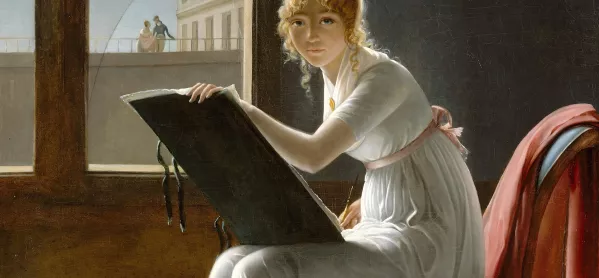- Home
- Want pupils to remember your lesson? Get them to draw a picture
Want pupils to remember your lesson? Get them to draw a picture

Taking notes and copying down definitions have traditionally formed the backbone of a great deal of learning, especially with older students.
For a time, teaching lurched away from this into a more child-centred, discovery form of pedagogy, but with the increased interest around cognitive science (and memory, in particular), traditional methods are once more at the forefront of many teachers’ repertoires.
But how effective is note-taking and can it be made more effective by incorporating non-written elements? New research certainly seems to think so.
Quick read: How making learning visual can assist revision
Quick listen: What every teacher needs to know about memory
Want to know more? Are you getting revision all wrong?
Draw it out
Back in the late 1960s, psychologist Allan Paivio made an interesting yet simple discovery: people find it easier to remember words that they can imagine, like “car” or “tree”, than abstract words where an image is much harder to visualise (such as “truth” or “justice”).
The implication here is that people are more likely to recall pictures than they are words, a phenomenon known as the picture-superiority effect.
Now, researchers at the University of Waterloo in Canada have discovered that drawing simple pictures might be more effective than taking notes or copying information from the board.
In a recent paper, Myra Fernandes and her colleagues highlight findings that support the drawing effect. They found that participants asked to produce a quick (four second) drawing of items in a list of words had significantly better recall of the words than those who wrote them down multiple times.
Memory for pictures
Initially, volunteers were given lists of simple words, such as “truck” or “shoe”, but later trials included more complex concepts such as “isotope” and “spore”, where participants were expected to recall the definition, too
Even with the increased complexity of the words, recall remained higher in the drawing condition than in the condition where participants copied out the words and definitions.
But why should drawing a concept make it easier to recall later?
The most likely explanation is that drawing requires elaboration on the meaning of the term by translating the concept into a new form (a picture). Elaboration requires deeper cognitive processing than, say, simple forms of rote learning, and the deeper the processing, the stronger the memory trace.

Better recall
Fernandes and her co-authors also suggest that drawing allows for the integration of three components.
First of all, the information is encoded and stored in a semantic form (that is, the meaning of the word or concept), then in a visual form (from the visual input) and, finally, as the actual movements required to produce the drawing, in a similar way to how we recall what our body needs to do to ride a bike.
Interestingly, and importantly for those of us who lack artistic prowess, the quality of the drawing didn’t correlate with the ability to recall it, so even stick figures will help.
Even though the study is supported by previous research, the use of drawings to enhance memory is still yet to be tested beyond the artificial and highly controlled environment of the psychology lab. We might, therefore, have to wait a little while before we have conclusive evidence from real-world settings.
Practical application?
However, there are ways to incorporate drawing into traditional methods that are just as likely to be effective.
By combining written notes and simple drawings associated with them, the to-be-learned information is encoded into memory in two separate ways; visual and auditory. Paivio describes this process as dual coding and it very much chimes with what we understand about the components of working memory.
Teachers can also combine the dual-coding method with retrieval practice by asking students to recall the image, the word or definition, or a combination of the two, thus strengthening the memory of it
So, next time you really want your pupils to remember something, ask them to draw it, rather than writing it down, and see what happens.
Marc Smith is a chartered psychologist and teacher. He is author of The Emotional Learner and Psychology in the Classroom (with Jonathan Firth). He tweets @marcxsmith.
References
- Paivio, A, Rogers, TB, and Smythe, PC (1968) Why are pictures easier to recall than words? Psychonomic Science, 11:4, 137-138
- Fernandes, MA, Wammes, JD, and Meade, ME (2018). The Surprisingly Powerful Influence of Drawing on Memory. Current Directions in Psychological Science, 27:5, 302-308
- Wammes, JD, Meade, ME, and Fernandes, MA (2016). The drawing effect: Evidence for reliable and robust memory benefits in free recall. Quarterly Journal of Experimental Psychology, 69:9, 1752-1776.
Keep reading for just £1 per month
You've reached your limit of free articles this month. Subscribe for £1 per month for three months and get:
- Unlimited access to all Tes magazine content
- Exclusive subscriber-only stories
- Award-winning email newsletters



